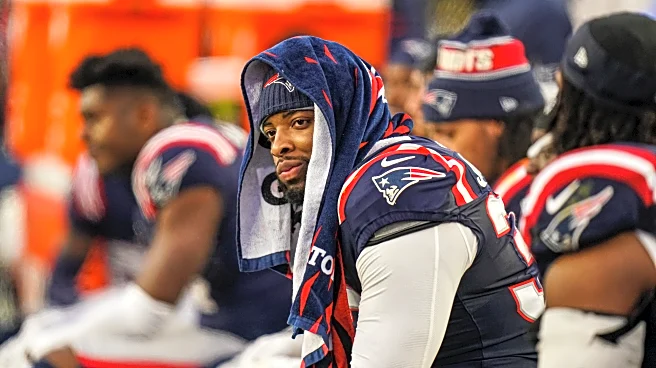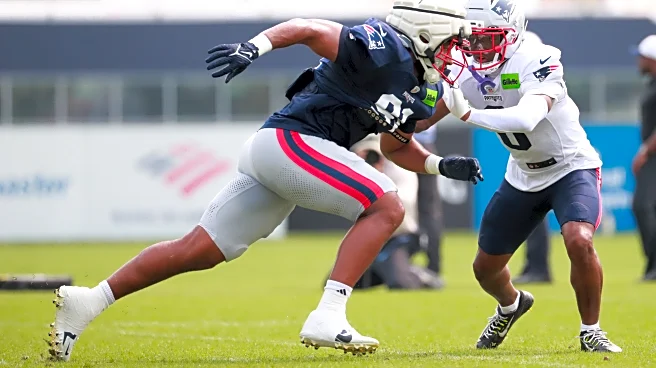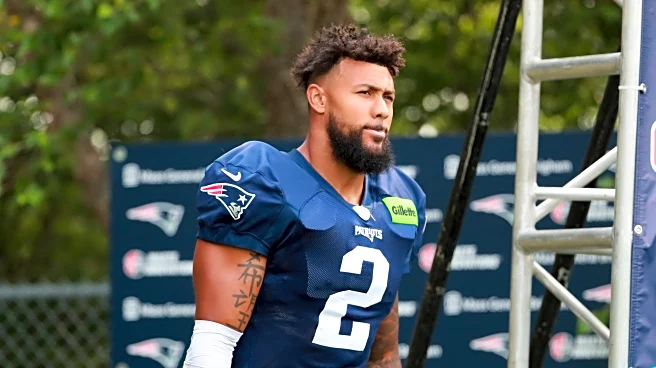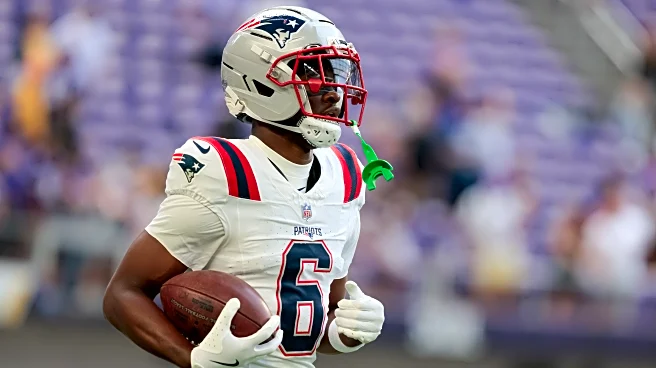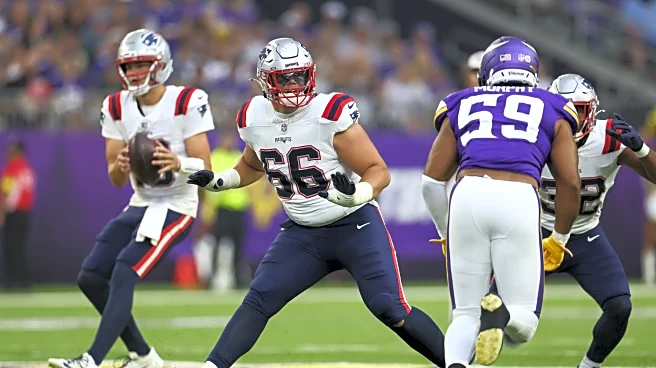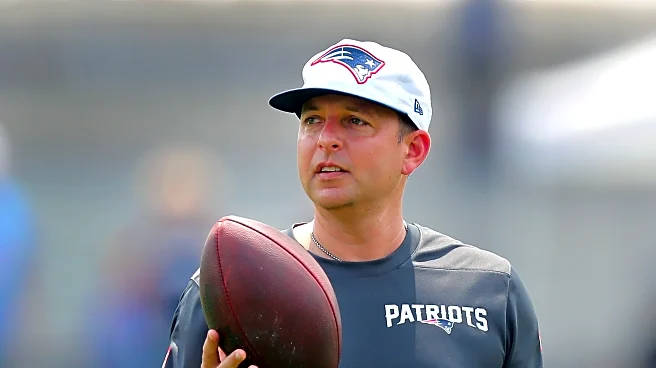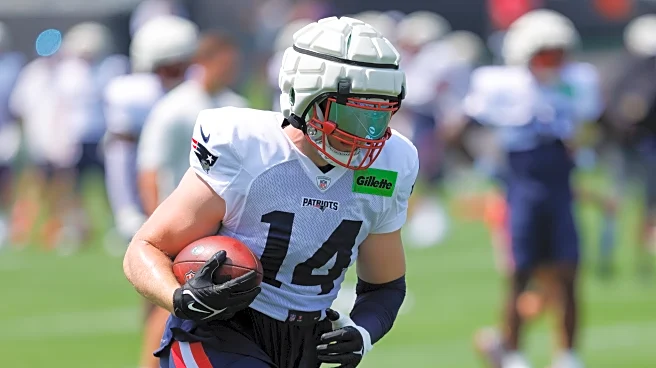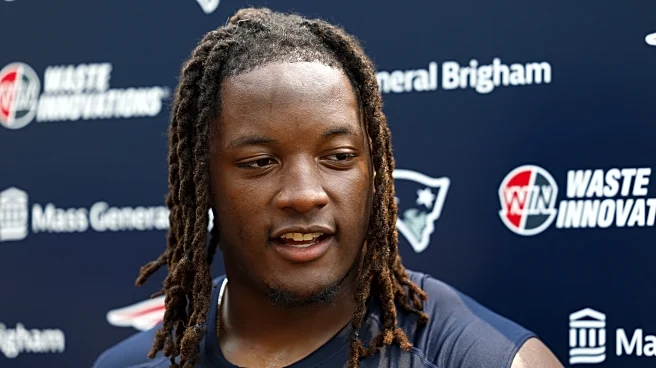
The two longest-tenured players on the New England Patriots’ roster might be headed out the door. After sliding down the depth chart this summer, safety Kyle Dugger and outside linebacker Anfernee Jennings are not as safe from being let go as their history as former starters would suggest.
In fact, according to a recent report by the Boston Herald, both have been put on the trade block. Needless to say, there is a long way from players being available to players actually changing teams. So with that
in mind, let’s assess how realistic the two moves actually are by trying to answer three distinct questions:
- What is the roster situation at their respective positions?
- What would the salary cap ramifications be in case of a trade?
- What would a possible return look like?
Obviously, all those questions need to be answered in a relative vacuum. Any follow-up moves as part of a bigger overall strategy cannot be considered, and a lot is based on speculation (informed speculation, but still).
That said, let’s dive right in starting with the 37th overall pick in the 2020 NFL Draft.
S Kyle Dugger
Background
Dugger joined the Patriots in the second round back in 2020, and since then has been a mainstay in the team’s secondary. One of the most exciting safeties in the NFL at his peak, he has lost a step after sustaining a nagging ankle injury early in 2024. The 29-year-old did start the summer as a member of New England’s top defense, but has since been surpassed on the depth chart by virtually every other safety on the roster. Most recently, he played deep into the preseason game in Minnesota and repped with the scout team in practice.
Trade outlook
Roster situation: The Patriots demoting Dugger to a bottom-of-the-depth-chart role in practice was possible due to the depth they have at safety. Jabrill Peppers is the top option, with veteran Jaylinn Hawkins the No. 2 alongside him. Fourth-round rookie Craig Woodson has also emerged as a serious contender for a spot in the top-level rotation, while Marcus Epps and Dell Pettus keep battling for their roster lives. In addition, New England also has used Brenden Schooler as a part-time safety, even though his main focus will remain on special teams.
At the moment, four of the Patriots’ seven safeties are roster locks: Peppers, Hawkins, Woodson and Schooler. The other three, including Dugger, seem to be fighting for what might not be more than one spot on the 53-man team.
Cap impact: After initially receiving the franchise tag, Dugger signed a four-year, $58 million contract extension with the Patriots last offseason that will run through 2027. A trade would remove a significant portion of the investment from New England’s salary cap: only his remaining signing bonus prorations as well as a 2025 offseason workout bonus would stay on the team’s books.
That would result in dead money numbers of $4.75 million and $9 million in 2025 and 2026, respectively. Meanwhile, the savings would amount to $9.67 million and $7.16 million in those two seasons.
Possible return: Even though Dugger played at a Pro Bowl-caliber level just two seasons ago, the NFL generally cares only so much about recent history; it’s all about future projection. Accordingly, teams will not bend over backwards to acquire a 29-year-old cut candidate playing on a sizable contract.
So, what could be a realistic return? A Day 3 pick swap — i.e. sending Dugger and a seventh-rounder to a team for a fifth-round pick — or player at a position of need might do the trick. Admittedly, that would be a low price given his contributions to New England’s defense over the years, but, again, it’s a “What have you done for me lately?” league.
Is a Kyle Dugger trade realistic?
Playing on a fully-guaranteed salary of $9.75 million, Dugger might be the highest-paid scout team player in the NFL at the moment. Is that an attractive investment for teams to make, including the Patriots? That depends in how confident they all are in Dugger’s outlook heading into what will still be just his sixth season in the NFL. The flashes have been enticing in the past, but there is a reason he is buried on the depth chart at the moment.
All of those nuances complicate the matter as it relates to a potential trade, even though all it takes is one team to pull the trigger. Of course, they could just try to play the waiting game and look for the Patriots to release him. From a team perspective, such a move would be far less attractive than a trade; cutting Dugger would come at a combined dead money total of $23.5 million over the next two years (although parts of it would be offset by him signing elsewhere as a free agent).
Putting all of those factors into consideration, we can say the following with relative confidence: a Dugger move is definitely within the realm of possibility, but his contract situation and recent struggles extending back to 2024 will put a cap on his trade value.
ED Anfernee Jennings
Background
Selected in the third round in 2020, Jennings had a relatively quiet start to his NFL career. In 2023, following a season-ending injury sustained by Pro Bowl edge Matthew Judon, he cracked the starting lineup and did not look back: he started a combined 30 games between his 2023 and 2024 campaigns and proved himself one of the better run defenders his position has to offer in the league. While lacking as a pass rusher, he still signed a three-year, $12 million deal to stay in New England last offseason.
Trade outlook
Roster situation: It was Jennings against the world on the Patriots’ edge last season, and the team made some major investments this spring not to find itself in that same situation again. Harold Landry and K’Lavon Chaisson were signed in free agency; Bradyn Swinson was selected in the fifth round of the draft; Elijah Ponder was acquired as a rookie free agent. In addition, New England decided to move Keion White to the edge full-time rather than keep using him as a an end/edge hybrid.
All of those moves left Jennings on the outside looking in, or, more precisely: lost in the depths of the roster. Like Kyle Dugger, he too played deep into last week’s preseason game in Minnesota. He did register three sacks, but those came against a bunch of roster bubble players and cut candidates.
Cap impact: Jennings has two years and a combined $3.35 million in guarantees left on his contract, including two signing bonus installments of $1 million each. Those plus his $250,000 2025 offseason workout bonus would remain on New England’s books as dead cap in 2025 ($1.25M) and 2026 ($1M).
The net cap savings of trading Jennings, meanwhile, would come in at around $3.28 million this year and $3 million in 2026.
Possible return: Jennings’ contract is more tradable than Dugger’s, but that does not mean the return would be much higher. The 27-year-old, after all, is a rather one-dimensional player whose strengths clearly lie in the run game. There is value in that, but maybe not to the degree of a team parting ways with a Day 2 selection in order to make a move.
The possible return in case of a trade would therefore likely look similar to the one outlined above: a Day 3 pick swap, or a low-level player exchange to help bolster a position of need (like TE3, IOL4, CB5).
Is an Anfernee Jennings trade realistic?
Looking at Jennings’ situation purely through the lens of his contract, the Patriots should have an easier time finding a trade partner in this specific case than Kyle Dugger’s. Then again, that does not mean teams will automatically jump on the phone to make an offer.
It also does not mean New England is indeed interested in trading Jennings just to get anything back in return. His recent performance — head coach Mike Vrabel spoke about him taking advantage of his opportunities after the Vikings game — might lead to New England deciding to hold onto him after all. The edge depth and run defense as a whole, after all, are bigger question marks than the safety spot, for comparison.
Jennings could still be traded, especially if an attractive offer does come along. But at the moment, the odds of such a move happening might not be quite as high as his rather tradable contract would suggest.
